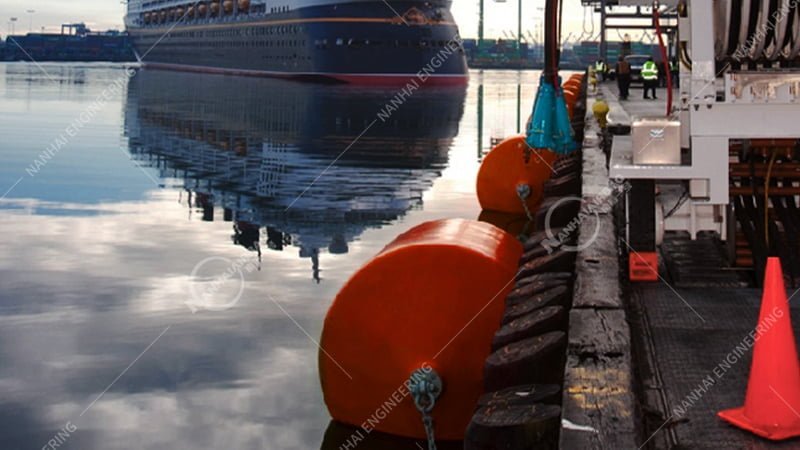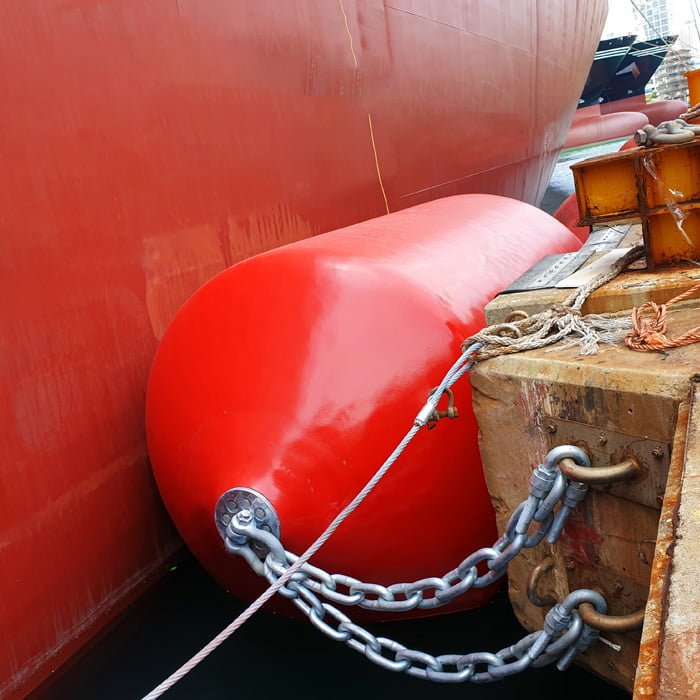Are Cell Fenders Worth the Investment?
07/08/2025Top 5 Foam Filled Fenders Brands Compared
07/09/2025Installation & Maintenance Guide for Foam Filled Fenders
Foam-filled fenders are crucial for marine operations, offering excellent energy absorption and low reaction force. They prevent damage during berthing and mooring. This guide from Nanhai will walk you through installing and maintaining these essential fendering systems.
Key Highlights for Foam-Filled Fender Installation & Maintenance
Foam-filled fenders provide superior protection for vessels and port infrastructure. Their robust design, comprising a closed-cell foam core and a tough, filament-reinforced polyurethane skin, ensures high performance and durability. Nanhai offers these fenders with various attachment options, including two-point and four-point mooring systems, to suit diverse operational needs. You must install them properly to maximize their effectiveness and lifespan. Furthermore, regular maintenance, though minimal, helps you detect any potential issues early, ensuring the fenders continue to perform optimally for years.
1. Pre-Installation Checklist
Before installing your Nanhai foam-filled fenders, ensure you have:
- The correct fender size and type for your application.
- Appropriate lifting equipment (cranes, hoists) with sufficient capacity.
- All necessary attachment hardware, including shackles, chains, and connecting plates, as Nanhai specifies.
- Safety gear for all personnel involved.
- Clearance of the installation area from any obstructions.
2. Installation Procedures
Your installation method will depend on whether you’re using a two-point or four-point attachment system.
2.1 Two-Point Installation
You typically use this method for smaller fenders or where a simpler attachment suffices.
- Positioning: Carefully lower the fender into the water or against the desired berthing structure.
- First Attachment Point: Securely attach one end of the fender to the designated mooring point on the quay or vessel using shackles and connecting plates. Ensure all connections are tight and secure.
- Second Attachment Point: Attach the other end of the fender to its corresponding mooring point.
- Tensioning (if applicable): If you design the fender to be tensioned, gradually apply tension, ensuring even distribution and proper alignment. Avoid over-tensioning.
- Final Check: Double-check all connections, shackles, and chains for proper seating and security.

2.2 Four-Point Installation
This method provides greater stability, and you often use it for larger fenders or in areas with strong currents or high berthing forces.
- Positioning: Carefully maneuver the fender into its desired location.
- Initial Attachment (Two Points): Securely attach two adjacent or opposing points of the fender to their respective mooring points on the quay or vessel.
- Remaining Attachment Points: Attach the remaining two points. This creates a stable, four-point connection.
- Even Distribution: Ensure that the load distributes evenly across all four attachment points. Adjust chain lengths or connecting plates as necessary.
- Tensioning (if applicable): If tensioning is required, apply it gradually and uniformly across all points.
- Final Check: Thoroughly inspect all four connections to ensure they are secure and properly aligned.

3. Maintenance Guide
Foam-filled fenders from Nanhai require minimal maintenance due to their robust construction. However, we recommend regular checks to ensure longevity and optimal performance.
3.1 Routine Inspections (Monthly/Quarterly)
- Visual Examination: Inspect the fender’s outer skin for any signs of cuts, abrasions, punctures, or delamination. While the polyurethane skin is highly durable, sharp objects or prolonged friction can cause damage.
- Attachment Hardware: Check all shackles, chains, swivels, and connecting plates for wear, corrosion, bending, or distortion. Replace any damaged components immediately.
- Moorings: Ensure the mooring points on the quay or vessel are intact and free from damage.
- Debris: Remove any marine growth or debris that may have accumulated on the fender or its attachments.
3.2 Addressing Minor Damage
- Small Cuts/Abrasions: You can often repair minor surface damage using a suitable polyurethane repair kit. Consult Nanhai for recommended repair procedures and materials.
- Corrosion: You can clean and treat light corrosion on metal parts with anti-corrosion coatings. You should replace severely corroded parts.
3.3 Long-Term Storage
If you store fenders for an extended period:
- Clean Thoroughly: Clean the fenders of any marine growth, dirt, or oil.
- Inspect: Conduct a full inspection and repair any damage.
- Store in a Shaded Area: Protect the fenders from prolonged direct sunlight and extreme temperatures to prevent material degradation.
- Elevate: If possible, elevate fenders off the ground to prevent moisture accumulation and pest infestation.
By following these installation and maintenance guidelines, you can ensure your Nanhai foam-filled fenders provide reliable and long-lasting protection for your marine assets.
Do you have any specific questions about the installation of two-point versus four-point systems, or perhaps more details on repair procedures?
